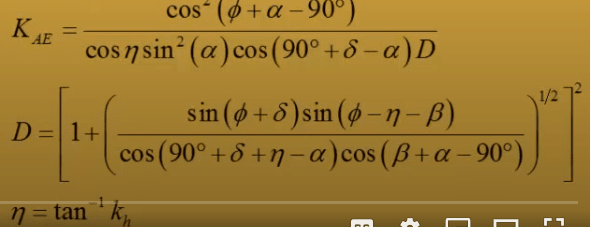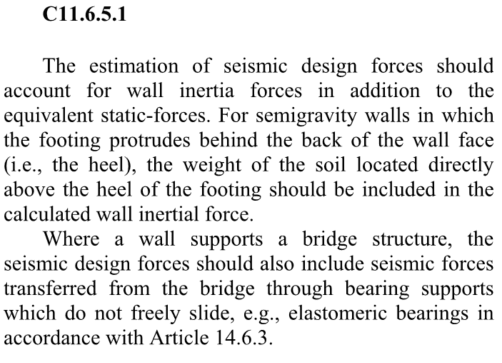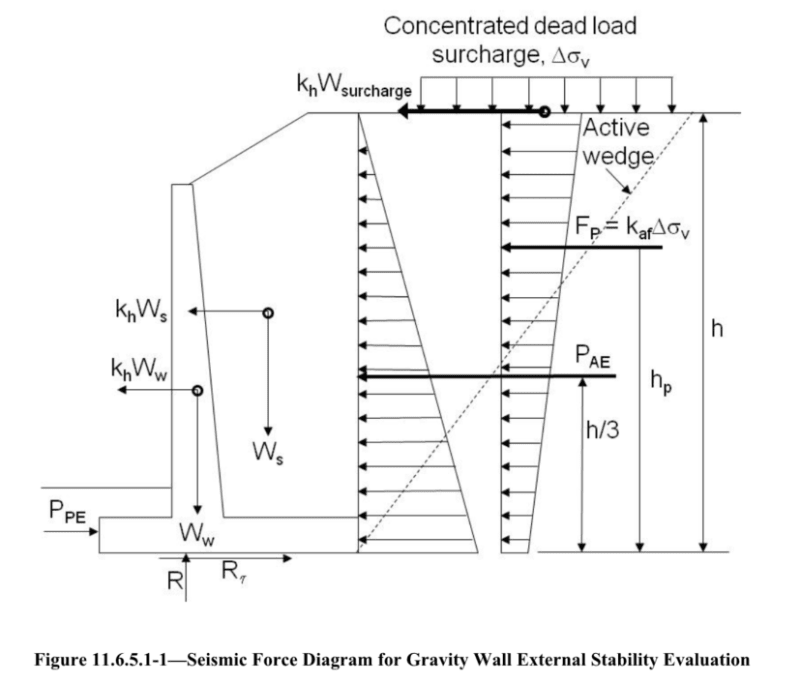Hello Everyone,
I have a question regarding KAE and Kh
It is silly question but I have navigated all books and materials to wrap my head about it.
In AASHTO section 11.6.5,
PIR = kh (Ww +Ws) in which PIR is the horizontal inertial force due to seismic loading. My understanding that this equation stem from F=ma
However, AASHTO also defines Pae = 0.5*gamma*h^2*Kae in which Pae is the seismic active force and Kae is the seismic active earth pressure coefficient. I understand that Kae is combining active and increment seismic earth pressure.
My confusion is the increment seismic earth pressure coefficient is determined from kh which is comes from acceleration and hence inertia. That is there is no difference between kh and increment Kae (seismic portion). Am I understanding it incorrectly?
Can someone please clarify?
Thank you!
I have a question regarding KAE and Kh
It is silly question but I have navigated all books and materials to wrap my head about it.
In AASHTO section 11.6.5,
PIR = kh (Ww +Ws) in which PIR is the horizontal inertial force due to seismic loading. My understanding that this equation stem from F=ma
However, AASHTO also defines Pae = 0.5*gamma*h^2*Kae in which Pae is the seismic active force and Kae is the seismic active earth pressure coefficient. I understand that Kae is combining active and increment seismic earth pressure.
My confusion is the increment seismic earth pressure coefficient is determined from kh which is comes from acceleration and hence inertia. That is there is no difference between kh and increment Kae (seismic portion). Am I understanding it incorrectly?
Can someone please clarify?
Thank you!




